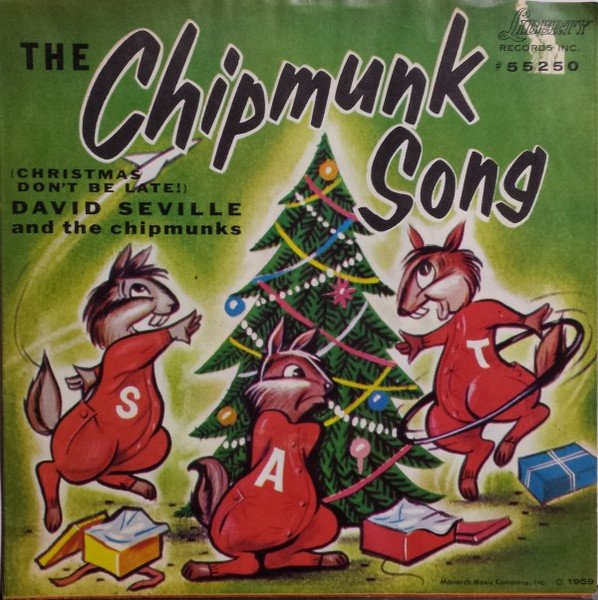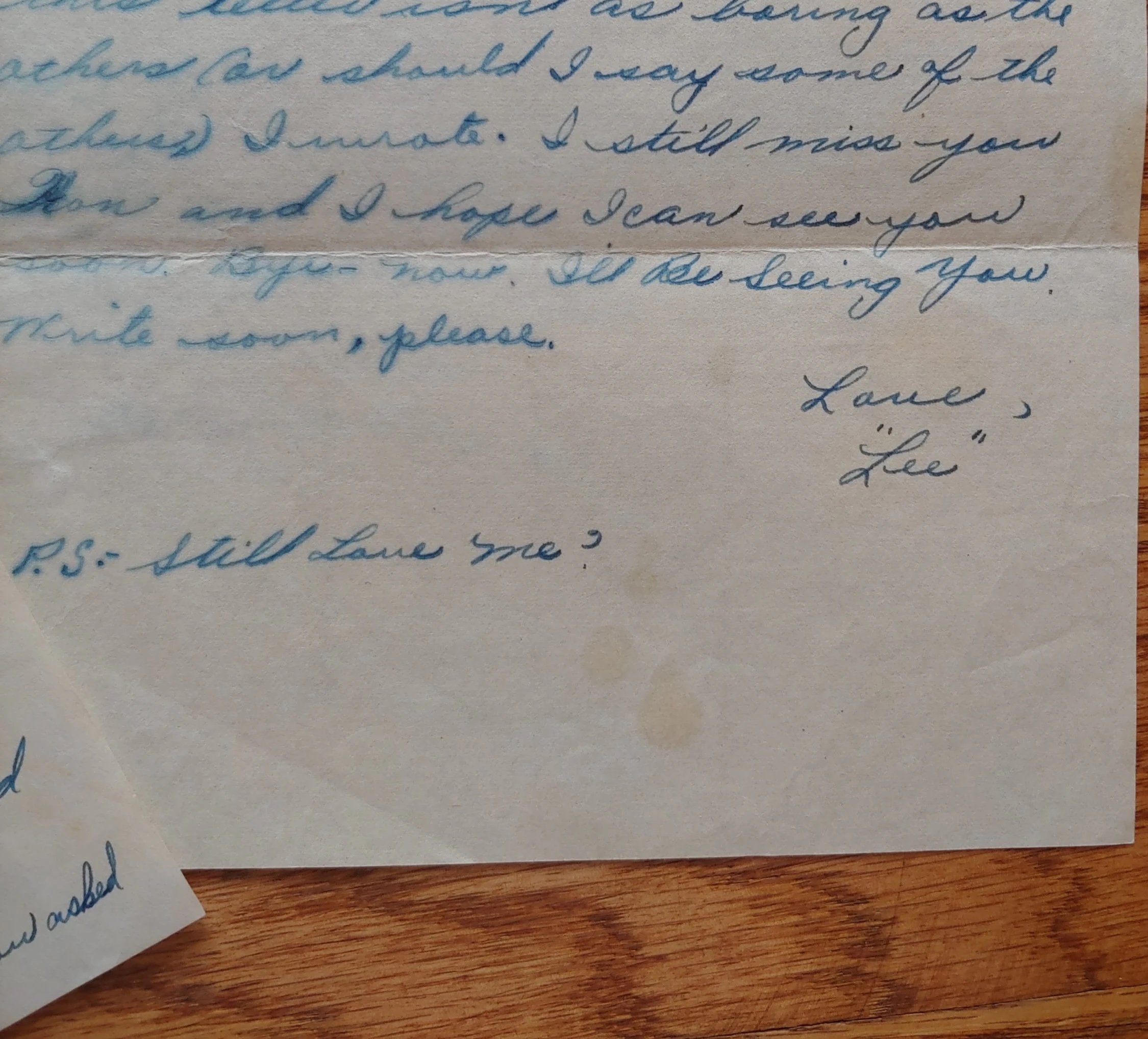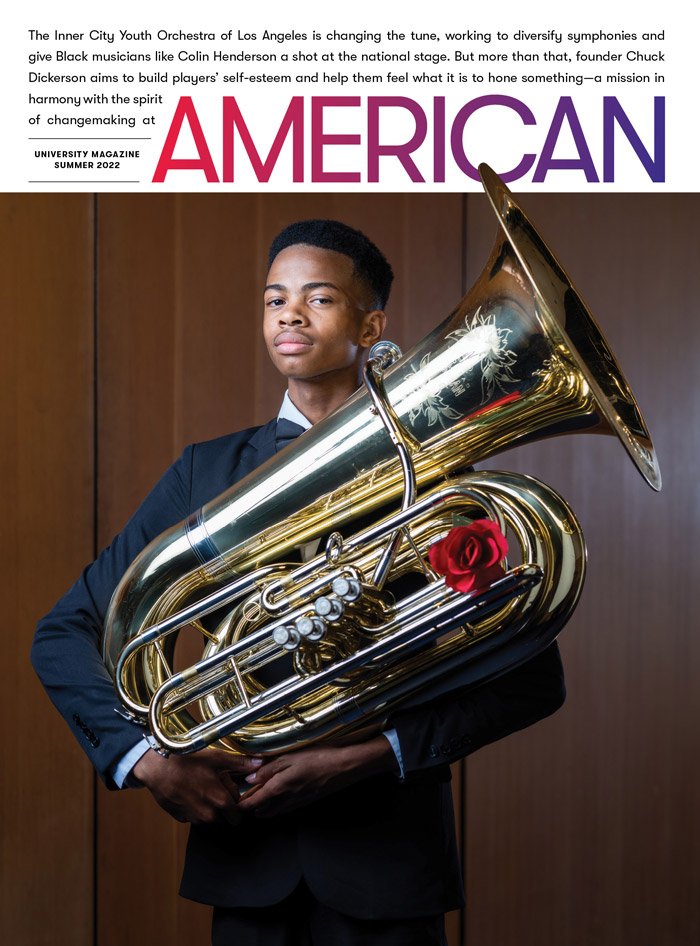Looking Out at the People Looking In
Fifty years after Robert F. Kennedy’s body traveled by train from a funeral in New York to its grave near Washington—drawing crowds all along the trackside—a then-college newspaper photographer shares the photos he took from an open railcar door, many of which have never been shown publicly.
-

How ‘The Chipmunk Song’ Stole Christmas
Sixty-five years ago, “The Chipmunk Song” hit No. 1 and parked there for four weeks—the last Christmas song to reach No. 1 for six decades. The Chipmunks were newly created for the tune by songwriter and performer Ross Bagdasarian, who started 1958 as a struggling artist and ended it as a household name. //The Washington Post
-

The Remarkable Effort to Locate America's Lost Patents
The sun rose on December 15, 1836, to find the entirety of the nation’s intellectual property records turned to ash: around 10,000 patents in total—every invention registered with the government since 1790.
//Smithsonian Magazine -

Behind Closed Doors: Virginia’s Eviction Epidemic
After a landmark study shined a light on the breadth of eviction proceedings across parts of the country — and turned the nation’s eyes to Virginia — VCU’s RVA Eviction Lab has become crucial to defining the problem and trying to fix it. //Virginia Commonwealth University Magazine
-

‘The Love I Would Gladly Die to Hold’
Liz Maguire’s Flea Market Love Letters project unfolds the yearning-filled, the joyous and even the pleasantly mundane pages of found love letters in the hope their weathered pages can still do what letters do best: connect people. //American University Magazine
-

From Familiar Strains, a New American Rhapsody
What began as a de facto orchestra of nine bored teenagers has grown to be the nation’s largest a predominantly Black youth orchestra.
//American University Magazine -

Interrupting Cancer’s Cascade
To stop the spread of breast cancer cells, Priscilla Hwang isn’t focusing on attacking the tumor itself, but rather its means of communication. “What kind of signals are the tumor cells receiving that turn on that migration pathway, [that] tell them, ‘OK, now it’s time to go?’” //Virginia Commonwealth University Magazine
-

A Treaty Signed in Marrakesh Made the Library of Congress More Accessible
Nearly 10 years after signing a treaty to ease access to braille and audio versions of printed works—and to allow nations to pool resources—the effort is finally bearing fruit in the U.S. with a surge of titles in almost any tongue. //The Washington Post Magazine
-

Irreverent Greeting Cards Written by People Who’ve Experienced Homelessness
One of the company’s best-selling items is a white card with painted sundrop blossoms that counsels, in all caps: “You will get through this s---.” But the fate of Second Story Cards may be less certain due to the pandemic’s squeeze.
//The Washington Post Magazine -

They Left D.C.’s Tech Scene for Memphis, and Started a Music Television Network
It was something between a lark and a plan, and it rode in on a gust of chutzpah: One day in the car in 2012, Amy and Ronnie Wright began to talk about what it would take to launch a music television network.
//The Washington Post Magazine -

One, Only Sometimes the Loneliest Number
Riders pile on and squeeze in to avoid the pinch of the closing doors. Arms reach out like branches from the thicket of standees to cling to available pole space; one young woman, stranded, braces herself by pressing a hand against a low ceiling. Hip-hop spills from headphones, people inexplicably wear sunglasses, and there’s the occasional whiff of bad breath. This is rush hour aboard the city’s newly crowned best subway line. //The New York Times
-

Three Golden Trumpets, Countless Gleaming Dreams
On rare occasions —“when the vibe is right”—keepers of the Louis Armstrong Archives will wheel out three gold-plated trumpets on an unceremonious wooden library cart and hand them to schoolchildren to hold, or to trumpeters who, with awe, press their lips to history. //The New York Times
-

The Clinic in the Clouds
British mountaineer George Mallory, who died somewhere near the top of Mount Everest in 1924, once said that he was pursuing the world’s tallest peak “because it’s there.” Lulu Freer went to the mountain in 2003 because of what wasn’t there: a doctor. //GW Magazine
-

Rocket Man's Lament
The way Frederick Gregory tells it, the date April 29, 1985—the day he first saddled half a million gallons of rocket fuel and rode it into space—was roughly the same for him as it was for the rest of humanity: Monday. (*Bonus: Ever wonder what “liftoff” feels like?) //GW Magazine
A Trans-Atlantic Dust-Up That Never Seems to End
In a narrow space behind a closed door in the Central Children’s Room at Donnell Library Center in Midtown, John Peters, the supervising librarian, pulls from a top shelf a burgundy book labeled “Guests.” Thumbing through the first pages, filled up with the joyful sentiments of visitors to the display case housing the original Winnie-the-Pooh dolls, he reaches an entry of a different stripe: “Send him home!”
//The New York Times
-

Present Company
Three pages into Irvin Yalom's heady, 480-page Existential Psychotherapy, the author pauses, like a scoutmaster a few steps into the wilderness turning to make sure the troop is still behind him. "So far, so good," he writes. Then he plunges forward, carving a new path for exploring the deep, lush wilds of the mind. As he had for years before that 1980 book and has in the decades since, the soft-spoken Dr. Yalom manages to bring lucidity and calm to a topic that otherwise might seem like an abyss of searing dread. //GW Magazine
-

And the Band Played On—and On and On
Absent an official tally on this sort of thing, the Grove Street Stompers say that, in a town brimming with performers who come and go nightly, their 45-year streak is the longest-running jazz gig in New York City, a claim some of their fellow jazz performers support. //The New York Times
-

The First 'Winged' Astronaut
He was the fifth American into space—but then again, the first four were astronauts and riding in a spacecraft. Bob White was neither. //GW Magazine
-

First Light: An Eyewitness to the First Detonation of a Nuclear Weapon
On a summer morning in 1945, a fireball erupted and rode a column of white-hot violence into the New Mexico dawn, twisting and folding into itself as it climbed tens of thousands of feet. The blast vaporized a 100-foot steel tower and punched a dent in the earth hundreds of feet across, fusing the desert surface into a glassy, jade-like glaze. More than five miles away, the blast threw a man off his feet. //GW Magazine

